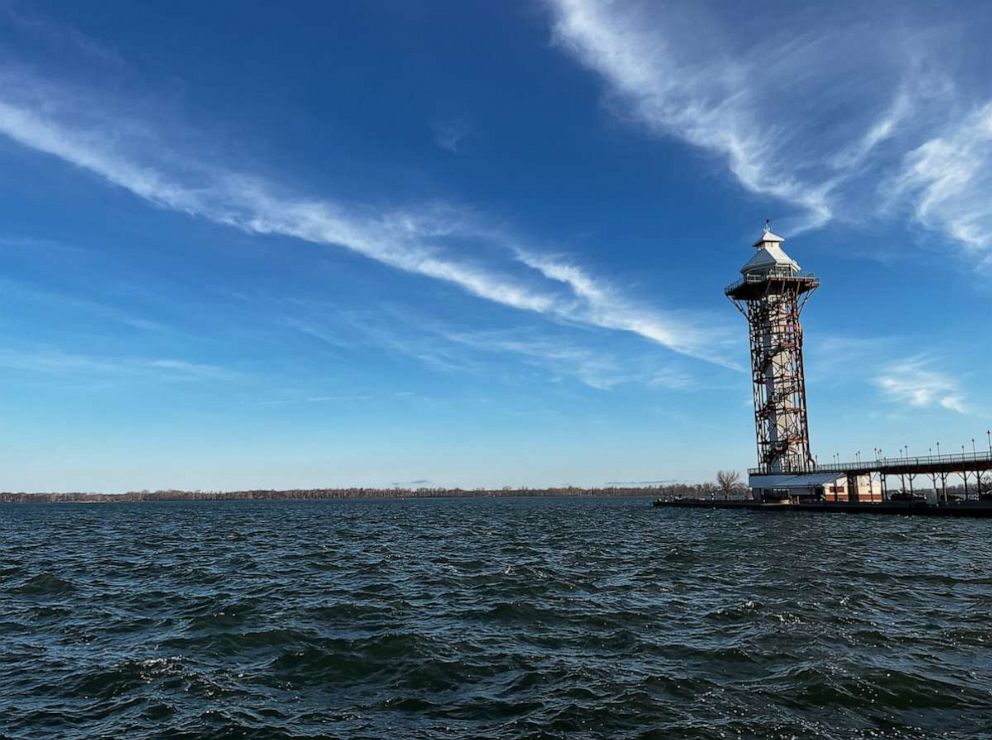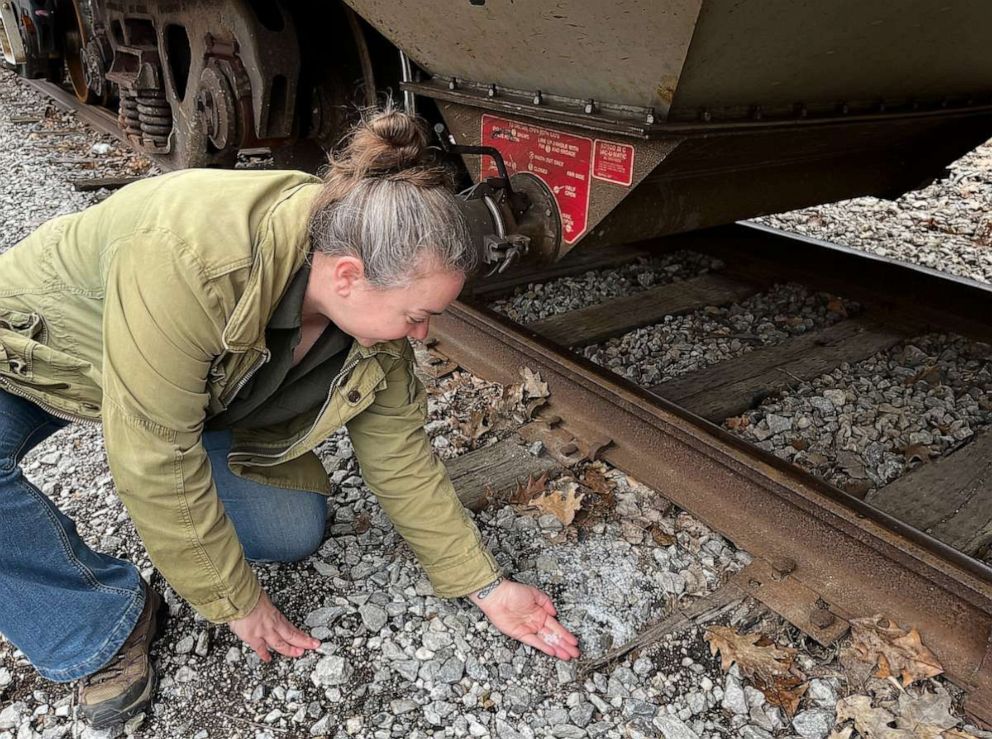It’s been over a decade since researchers began looking into microplastics in the Great Lakes.
Now, the issue is getting renewed attention amid broader concerns about the potential effects of microplastics on the human body and a possible future link to the hydro-fracking boom currently happening in the region.
Microplastics form as plastic pieces in the environment erode into smaller and smaller pieces, eventually becoming so small that they can’t be seen with the naked eye, according to Sherri Mason, director of sustainability at Penn State University’s Barr Campus on Lake Erie, who’s spent years researching microplastics in waterways.
Unlike other types of litter, the plastic bits will take far longer to disappear.

Lake Erie is shown on a sunny day.
ABC News
“If you were to see a paper bag on the side of the road, it’s unsightly, but within weeks it has completely, what we call, mineralized. There are organisms in the soil that can use it as a food source,” Mason told ABC News’ Start Here podcast host Brad Mielke.
Mason’s research has focused on Lake Erie, which has a concentration of microplastic that rivals the Great Pacific Garbage Patch, a floating landfill that’s twice the size of Texas, according to multiple studies.
But the majority of plastic in Lake Erie is less than 5 millimeters in diameter, much of it approaching microscopic size “about the width of a human hair,” Mason said. She describes it as a “smog” of particles drifting around, which also makes it impossible to meaningfully clean up.
Mason and her students spent a year collecting samples of trash from Lake Erie and sorted them into different categories.
“Thousands of bottles is the No. 1 thing. Bottles and cups, and then a lot of chip bags. It’s mostly a lot of food packaging,” Mason said.
Before plastic gets pressed into a shape like a water bottle or bag, it starts off as plastic pellets that get fed into big machines.
The pellets, about the size of a grain of rice, are transported by millions on freight trains before being siphoned out onto trucks that take them to factories. Not far from the banks of Lake Erie, small piles of pellets litter the tracks where they’ve spilled out during this process, Mason said. When it rains, the pellets start making their way into nearby Mill Creek and later into lakes and oceans.
And it’s just one of the ways that plastic can end up in bodies of water, according to Mason.
What’s more, one study suggests that the average person may be ingesting about 5 grams of plastic per week, or the equivalent to the mass of a credit card, according to a study commissioned by the World Wildlife Fund. Microplastics have even been found in the lungs of living people, according to recent research. Mason said that microplastics are getting so small that in some cases they are able to find their way beyond the digestive tract.

Penn State University researcher Sherri Mason is shown holding up plastic pellets that fell onto the train tracks in Erie, Pa.
ABC News
“When you get a piece that’s smaller than a hundred microns or the width of a human hair, they can migrate across the gastrointestinal tract. They get carried in the blood. We have found them in the blood, and they can make their way into certain organs. They can make their way across the placental boundary,” Mason said.
The World Health Organization says that although more research is needed, so far it has found no direct evidence that microplastics make people sick. The Plastic Industry Association, which represents plastic makers, said in a statement that claims about microplastics “lack sound data,” and that plastic is overwhelmingly safe. In fact, the association said, plastics are essential to hygiene, which is why it is in so many medical products.
But Mason is concerned that the use of plastics shows no signs of slowing down.
The Midwest is currently in the midst of a hydro-fracking boom, and half of the fracking wells in Pennsylvania produce ethane. Ethane can be turned into polyethylene, which is the most common type of plastic.
“So now there is a connection between basically hydro-fracking and the plastics industry,” Mason said.
Last year, a new plant opened just north of Pittsburgh that converts this material into plastic, and two more facilities are being proposed in Ohio.
According to the Center for International Environmental Law, the health of the fossil fuel industry is deeply reliant on plastics, and these investments could cause plastic production to spike.
Mason believes that the ultimate responsibility to curb plastic usage lies with the companies that make and use them.
“You’ve given your money to that corporation. You end up with their container, which you don’t want, but then you also have to pay to get rid of it. You have to pay to clean it out of the water,” Mason said.
